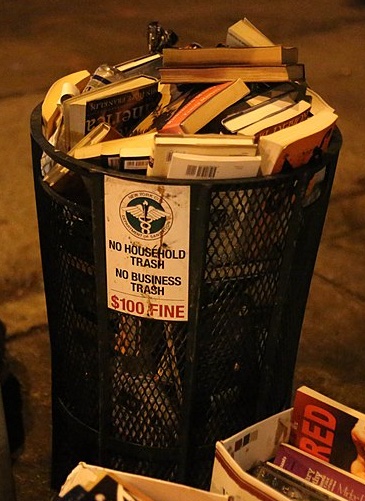How to (and how not to) give away your business book
There are plenty of situations in which it makes sense to give your book away for free — in conjunction with a speech, for example, or as a thank you, or to solicit a review.
But be careful that you don’t do it in a way that communicates, “My book has no value.”
A textbook case on how not to give a book away
I received this email yesterday from an author I don’t know well.
Subject: I’d like to give you my new book – [book name]
From: [author’s email] via n.convertkit.com
Hi Josh,
As part of my LinkedIn network, I’d like to give you my latest book, [book name], on Kindle. This is a one-time offer from my publisher, and you also get the complementary toolkit to use for your own personal development or with your team and organization.
Request the complementary Kindle book here
[Book name] has been profiled in Harvard Business Review and Psychology Today, and has received endorsements from leaders at Amazon, NBCUniversal, and the United Nations.
Best regards,
[Author]
I have questions.
What is the book about? (In case you’re wondering, this book’s title doesn’t help much with that.)
Who is it for?
Am I in the target market?
Isn’t it a little desperate to spam your whole LinkedIn network? (And does LinkedIn even permit that?)
Did you consider a copy editor to avoid looking sloppy? Complimentary (free) is not the same as complementary (adding additional value), and your very first sentence features a dangling modifier.
The totality of the message is “I’m giving this away to everyone I know, because it’s not worth paying for.”
How to give away books properly
There are three reasons to give away books in physical or ebook format.
- To boost your reputation.
- To generate reviews or otherwise promote the book.
- To thank someone.
Individual, personalized emails or conversations can accomplish all three. If you know someone and want to send them a book, send a personal note. It’s inefficient, but far more likely to accomplish your objective.
If you want to do a larger giveaway of any kind, then these are best practices:
- Connect with a group that matches your target market. If your book is for dentists, it makes sense to send it to a list of dentists, not all of your LinkedIn contacts.
- Describe who the book is for, so people can say “I might be interested in that.”
- Describe the benefit in one sentence, so people can say “That might be helpful to me.”
- Consider including the book cover. A well-designed cover communicate “This book is valuable.”
- Follow up with a request to post a review. (That’s far more effective if your targeting and benefits statements have narrowed down the list of requesters.)
You put a lot of work into your book (I hope). Treat it as something valuable. Spam connotes crap. So don’t spam your book unless you want people to think of it as crap.

Call me old school, but I immediately think less of a book when its random author sends me the galley.